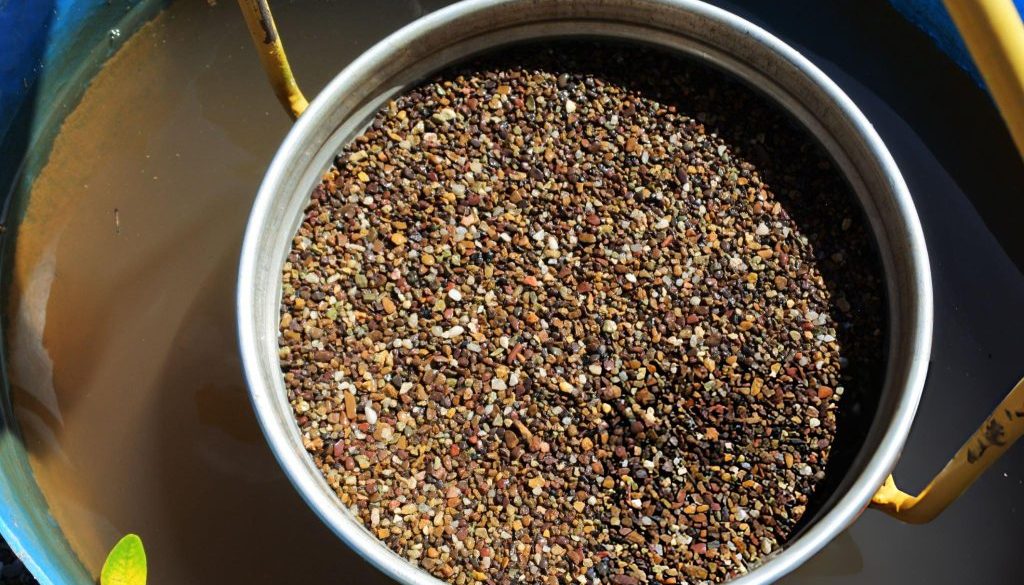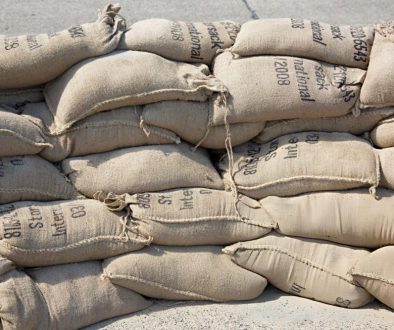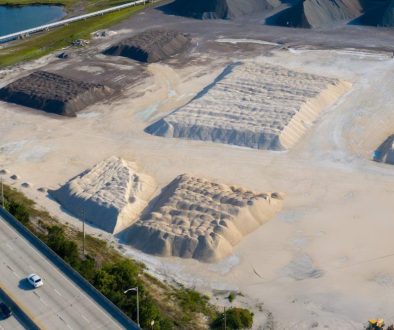Wet weather can make even simple groundwork a bit tricky, especially around late November in places like Cheshire. Cold, damp days often turn firm ground into soft, soggy patches that are harder to work with. When you’re handling materials like golden gravel bulk bags, a little extra care goes a long way.
Gravel is a popular choice for paths, driveways, and garden features, but if it’s mishandled in the rain, things can get messy fast. Wet gravel sticks, clumps, and doesn’t spread the way you want it to. Left out in the open, bulk bags can take on water or even split. We’ve put together a few simple steps to help keep things moving, whatever the weather has in store.
Why Wet Weather Affects Bulk Gravel Handling
Rain changes how materials move, feel, and hold up on site. Gravel that’s been sitting in a bag tends to soak up moisture over time. That extra water can add weight, but it also affects how the gravel behaves once it’s out of the bag.
• Heavier bags are harder to shift with small machines or by hand
• Damp gravel often sticks together, which slows spreading and can lead to uneven layers
• Loose or open bags may let water in, turning the clean stones into a soggy mix
Even the ground plays a part. Forklifts or diggers might sink into soft patches, causing ruts or damaging surfaces. If the bags leak, gravel might spill across a site, creating more clean-up work. And when wet gravel is used for drainage or decorative areas, it won’t always look the way it’s meant to.
When we’re working in spots with heavy rain or frequent showers, remembering how weather affects materials helps us plan better. Small changes now can stop big problems later on.
Best Places to Store Bulk Bags in November Rain
Keeping golden gravel bulk bags in good shape starts with smart storage. Once November hits, it’s common to have regular rain and standing water on site. We always try to find a space that’s raised and easy to reach.
• Use pallets, blocks, or timber to keep bags off the ground and away from direct contact with wet soil
• Cover the top of the bags with a waterproof sheet or tarp but make sure air can still flow to stop condensation
• Place bags near site access routes to reduce movement across slippery or uneven ground
Drainage matters too. We avoid setting bags near dips or low points where water tends to collect. A sloped area works better, as water can run off instead of pooling around the base. If we’re working somewhere that doesn’t have great surface drainage, laying down some hard-standing first gives us a cleaner, safer place to work from.
Enviro Skip Hire offers golden gravel bulk bags that are delivered directly to your chosen spot, and the aggregates page explains that local suppliers understand the need for efficient delivery and placement, especially in wet months.
Moving Bulk Bags Safely in Soft Ground
Once it’s time to move bags into place, it pays to go steady. When the ground’s wet, mistakes happen fast. Machines can skid, slip, or tip under pressure. That’s why we check the surface first and aim for the driest route possible.
• Use forklifts or telehandlers fitted with proper attachments, and stick to level paths
• Lay down boards, gravel, or mats if the ground is too soft or muddy
• Look over each bag for signs of wear, tearing, or loose handles before lifting
We take our time when moving golden gravel bulk bags around wet sites. Rushed moves in bad weather often lead to broken bags or spilled gravel. Steady lifting, slow turns, and a clear path keep bags intact and the site tidy.
Our gravel is supplied in bulk bags suitable for both manual and mechanical offloading and is available for prompt delivery across Cheshire and Staffordshire, as noted on our website.
Spreading Gravel Without Ruining the Finish
Spreading gravel onto damp ground isn’t always easy. The gravel can clump together or sit unevenly if the base layer isn’t ready. We avoid laying it out in soaking rain when possible. Waiting for a dry patch, even just a few hours, can make the job much smoother.
Before spreading, we prep the area by checking the sub-base. If water’s already pooling, it’s best to wait. Putting gravel over waterlogged ground can lead to soft spots later when that trapped water has nowhere to go.
• Make sure the base is level, compact, and drains properly
• Rake the gravel out slowly, letting it settle naturally as it goes
• Avoid using wet material straight from the bag if it’s heavily soaked or sticky
When conditions allow, we spread thinner layers of gravel at a time. It might take a couple of passes, but it helps avoid uneven patches. With a bit of care and planning, the final surface looks cleaner and holds up better through winter.
Prep Work that Pays Off Later
Late autumn’s never the easiest time to lay gravel, but getting the groundwork right now means less hassle in the months ahead. Sites around Cheshire can see heavy rainfall and freezing ground by early December, so we look for ways to stay ahead of that.
The extra bit of planning we do in November often pays for itself. Keeping bags dry, handling them at the right time, and spreading gravel on a stable base keeps the job running and makes everything last a bit longer. No one wants to revisit a site in spring just to fix dips, spills, or growth between stones. By handling our materials the right way now, we save time, protect the finish, and keep projects moving through the winter.
Tackling a gravel job in damp Cheshire weather requires the right preparation for smoother results. Storing and moving materials efficiently helps prevent mess and avoid unnecessary delays. With extensive experience on soft ground under unpredictable skies, we know exactly what challenges to expect. For reliable delivery every time, our golden gravel bulk bags arrive ready to use, come rain or shine. Use Enviro Skip Hire to get your site set up with ease.




